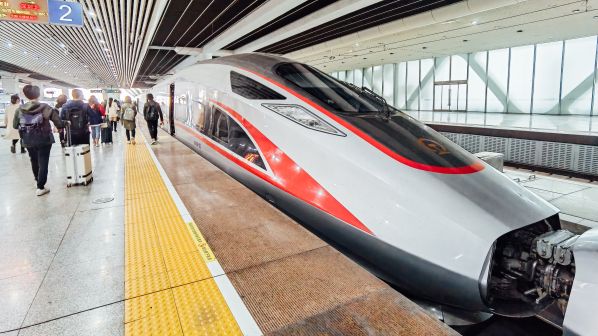CHINA National Railways (CR) reported a total of 2.166 billion passenger journeys in 2020, down 39.4% from 3.578 billion in 2019, due to the Covid-19 pandemic. The length of journeys dropped even further, with CR recording 825 billion passenger-km in 2020, down 43.2% from 1.252 trillion passenger-km in 2019.
However, freight increased by 4.1% to 3.58 billion tonnes in 2020, with tonne-km up 1.4% to 2739 billion tonne-km. Container traffic in particular rose 36.7%.
CR reported that its fixed assets were worth Yuan 781.9bn ($US 120.1bn) at the end of 2020, following the construction of 4933km of new lines, including 2521km of high-speed lines. This extended the national network to 146,300km, including 38,000km of passenger dedicated lines (PDL) and 18,300km of line not operated by CR.
CR says 59.5% of the network is now double track, with 72.8% electrified. Of the 128,000km operated by CR, 61.6% is double track and 74.9% is electrified.
A total of 8000 diesel locomotives and 13,800 electric locomotives were operating on the Chinese network last year, along with 76,000 coaches, 912,000 freight wagons, and 3918 EMUs. This includes 7600 diesel locomotives, 134,000 electric locomotives, 75,000 coaches, 857,000 freight wagons, and 3828 EMUs - comprising 30,620 individual coaches - operated by CR.
Energy consumption across the national network fell by 5.8% to 15.48 million tonnes of coal equivalent, while sulphur emissions fell by 38.1%. An additional 4500km of track-side areas were “greened,” taking the total to 57,600km. Deaths on the railway system fell by 15.9% compared with 2019.
Passenger numbers recover for Spring Festival period
CR carried 218 million passenger journeys over the 40-day Spring Festival holiday travel period to March 8 2021, up 3.5% on last year when restrictions were in place due to Covid-19. This was despite people being asked not to travel this year, although no formal stay at home orders or travel bans were put in place. 517 million tonnes of freight were also carried over the same period, 18.1% more than in 2020.

